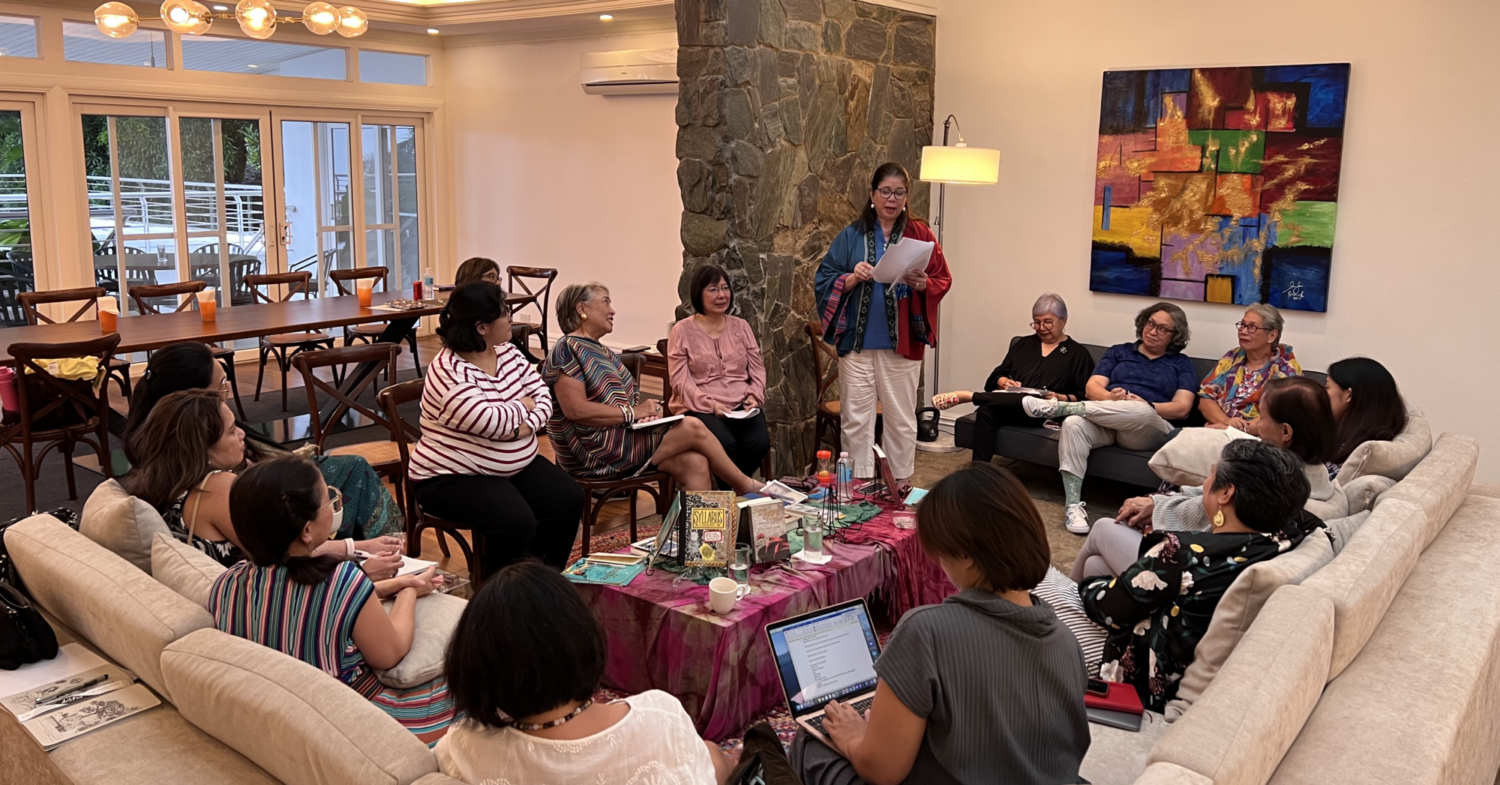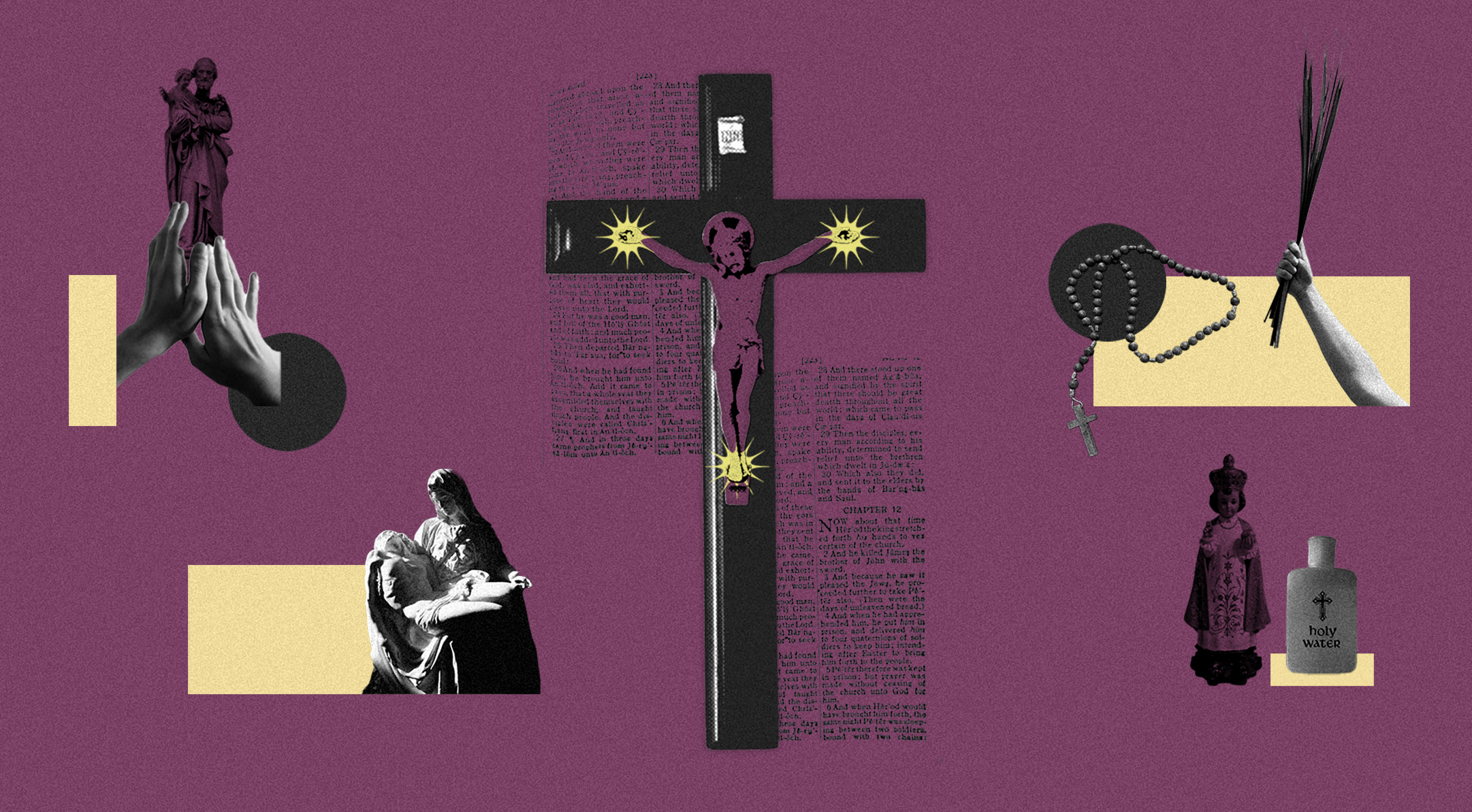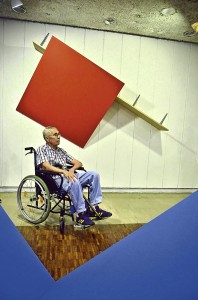
Ongoing at the Cultural Center of the Philippines is an unprecedented retrospective of a single artist on all four levels of the building. The artist is Roberto Chabet.
He is not a National Artist, and he is far from being a household name. And yet this exhibit is but the culmination of a year-long series of exhibits last year in all the most important venues for the exhibition of art in this country, and including the Institute of Contemporary Arts Singapore and Osage Kwun Tong in Hong Kong, all marking Chabet’s 50th year as an artist.
From the top: In the Little Gallery on the fourth level of the CCP, is a reconstruction of Chabet’s “Bakawan,” first exhibited in this very same space in 1974, and one of the earliest examples of installation art in the country. The title is Filipino for mangrove wood, once a common kitchen fuel, the primary material of the work. Cut into equal short lengths and suspended from the ceiling in a grid, the wood can only be seen through the gallery’s glass door, the handle of which has been removed.
Like all of Chabet’s works, there is nothing to date “Bakawan.” It could have been made yesterday; it could have been made in 1974. Rather than the work indicating its age, there is something about its age that yields something about the art: It was ahead of its time, and its young author, at the dawn of his career, had developed a clear and rigorous vision that he would stick to for at least 50 years, and a prodigious gift of articulation.
By sealing off the entryway to the gallery, Chabet made the viewer explicitly aware of where she or he stood in relation to the art, which, in a manner of speaking, is nowhere, that is to say, not a physical space, but a conceptual one. Chabet heightened the conceptuality of this space by collapsing the installation’s three-dimensionality into the flat plane that is the door through which the art is viewed, a plane as flat as a painting.
Chabet was the founding museum director of the CCP (from 1967 to 1970), back when it was newly minted and breathtakingly glamorous, a bulwark of civilization in a leading economy. No one could have been more suited to the job.
The modernist master HR Ocampo painted the canvas mural that covers the stage curtains in the Main Theater; the one in the Little Theater is by Chabet. The choice of artists for the two primary venues of the CCP might be read as a lineage of succession, but it is more usefully seen as a progression of modernities, even a rupture.
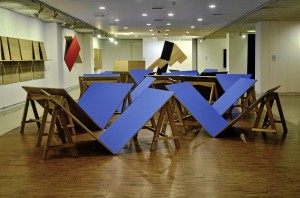
‘Early success’
“I had early success,” Chabet recounts over half a century after the CCP was built.
He is in his studio in the home he grew up in, an old Spanish-style house in Sta. Mesa, a completely hidden anachronism in a sea of smaller houses jostling against each other desperately. It’s a long, pristine space. Lined up on one wall are numerous pentagonal canvases in various hues; they are for his nth one-man at West Gallery, to open on his 75th birthday, March 29.
Although visibly weakened by two strokes, the artist has lost none of his acumen, although a bit of the fierceness that made him such a terror at the University of the Philippines College of Fine Arts, where he held court for decades.

After his early success, however, there eventually came a void, when his art simply did not register. “It was not well-received,” he recalls. “That was hard.”
But he continued to teach. Sullen and terse, Chabet struck fear in all students. He could cut you down with a few choice words. Because he spoke so very little, each utterance had the volume of a boom. Young voices quaked in response. Eyes would fill with tears of rage.
And yet this year-long series of shows marking his 50th year was organized by a group of former students, gathered under the name King Kong Art Projects Unlimited. The shows were physically mounted by other former students, who helped recreate several installations long ago disassembled or lost.
And the exhibition openings, month after month, were all religiously attended by his former students. I myself am a former student (but had nothing to do with the mounting of the shows).

The year’s length, the involvement of all the galleries (including the Ateneo Art Gallery, UP’s Vargas Museum, the Lopez Museum), the use of the CCP top to bottom, the international scale, all of these are unprecedented.
But so is the tribute itself, by former students. I can only think of Jacques Lacan, whose thoughts survive today only because his students compiled their notes into a couple of books, to compare.
Disciplinarian
“They tell me now that they needed the strictness,” he says.
It wasn’t discipline that was needed, it was commitment, to modernity and meaning. Fledgling that you are, and in this Third World, how could you so earnestly grant this art such credence, these bits of wood and canvas and pigment such meaning?
Chabet was a peer of giants. He was a protegé of Arturo Luz, was in league with Fernando Zobel and Lee Aguinaldo. It was plain that for him art’s meaningfulness was without question, and that between what is art and what is not is an elemental difference. Chabet displayed a vast contempt for what attempted to pass as art.
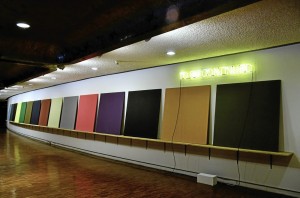
As his students needed him, so did he need his students. “I learned so much from them,” he says today.
Chabet’s art reflects an asceticism that seems to permeate his entire life. He uses a highly restricted vocabulary of pre-made materials of modern domestic architecture-plywood (primarily), galvanized-iron sheets, shelving brackets. Their Spartan barrenness only heightens the voluptuous affect the artist is able to muster through them. There is such a remarkable contrast between the martial stringency of the materials and the form of the artwork and the tenderness and beauty it conjures.
This polarity is also what makes him, as a person and a pedagogue, so compelling.
“As a teacher to generations of contemporary artists, his mentorship has been a significant part of their artistic growth and maturity,” says CCP’s newly appointed visual arts head Boots Herrera.
The deal to mount an all-levels retrospective at the CCP was struck between King Kong and Herrera’s predecessor, Karen Flores, a former student of Chabet’s (incidentally, the granddaughter of HR Ocampo) and also an alumna of the activist art group Saling-pusa. There’s a direct line between Chabet and many of today’s critically acclaimed young artists who have made the Philippine art scene so vibrant by broadening its conversation with art elsewhere.
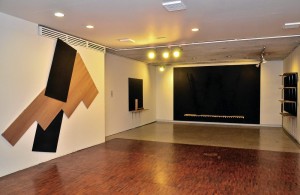
“Cargo and Decoy” was inspired by tribes in the South Pacific that had received rations and supplies air-dropped by Western armies for their troops on the ground during the war. When the war ended, the gifts from the winged celestial beings ceased to come, so the tribes attempted to lure them back by building decoys on the ground.
Chabet renders these decoys in pairs of plywood panels propped like wings by sawhorses. (Coincidentally, the lure and the decoy are key concepts in Lacan’s mapping of desire.) On their upsides, the panels are painted blue, perhaps representing a reflection of the sky toward which they are directed. All in all, they appear like a wave of yearning beamed at the inscrutable.
At the time, Chabet said to me of the artwork: “Maybe it’s a way of trying to lure better art to the Philippines.” He laughed.
Strangely enough, it did.


